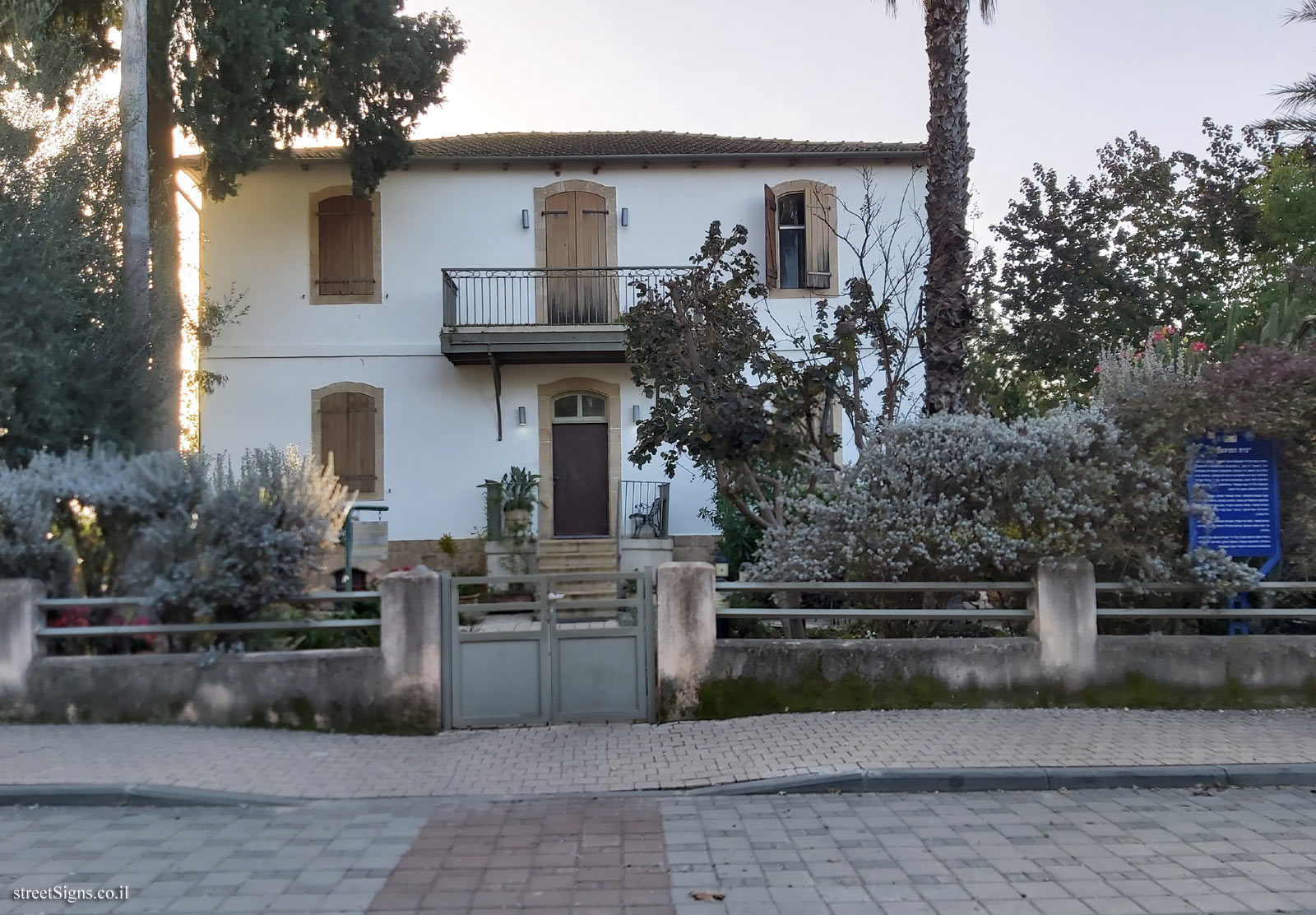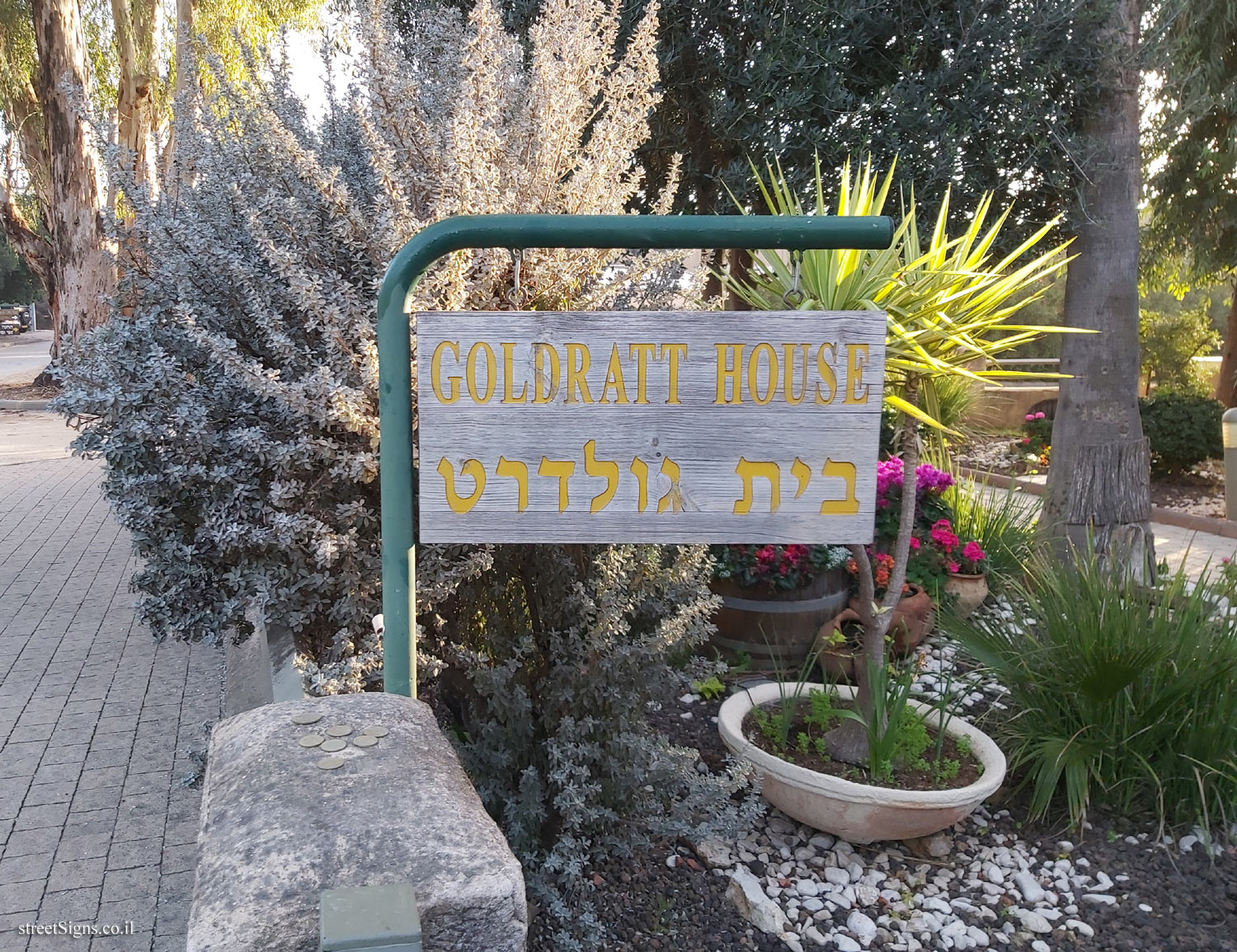The sign shape is rectangular but its head is designed according to the silhouette of the old building of the Gymnasia Herzliya, which serves as a logo of the Council for the Preservation of Heritage Sites in Israel
The building was photographed that day
 Click for a larger image
Click for a larger image The building is also called the Goldratt House as can be seen on a sign taken that day
 Click for a larger image Translation of the text on the sign
Click for a larger image Translation of the text on the sign:
Symbol of the Council for the Preservation of Israeli Heritage Sites
Emblem of Moshav Bnei Atarot
Symbol of the Hevel Modi’in Regional Council
Council House The building was built by the Templar peasant family in the first decade of the 20th century, during the Wilhelma colony period.
The house is built of limestone and kurkar. The original tiles and window frames are made of prefabricated concrete elements, made by the Wieland factory in Jaffa. In the front balconies, iron and ironwork items designed by the Templar blacksmith in Wilhelma. The entrance steps, original and carved from hard limestone.
The farm buildings, which were behind the house, were gradually demolished. From the Templar period remained in front of the cypress, palm and cactus. In the years 1950-1990, the building served as the offices of the Modi’im Regional Council, now "Modi’in District" hence the name of the building.
In the years 1948-1952, evacuees from the "Beerot Yitzhak" in the Negev lived in the building. Until 1989, two of its rooms served as the synagogue of Bnei Atarot.
In 2009, the building was restored by the Moshav Bnei Atarot Association. During the restoration process, the wooden floors, the basement and its vaulted ceilings were preserved and the wall decorations in the foyer were restored.

 Click for a larger image
Click for a larger image  Click for a larger image
Click for a larger image